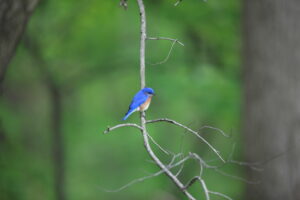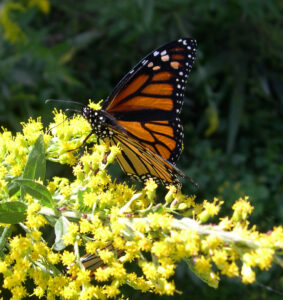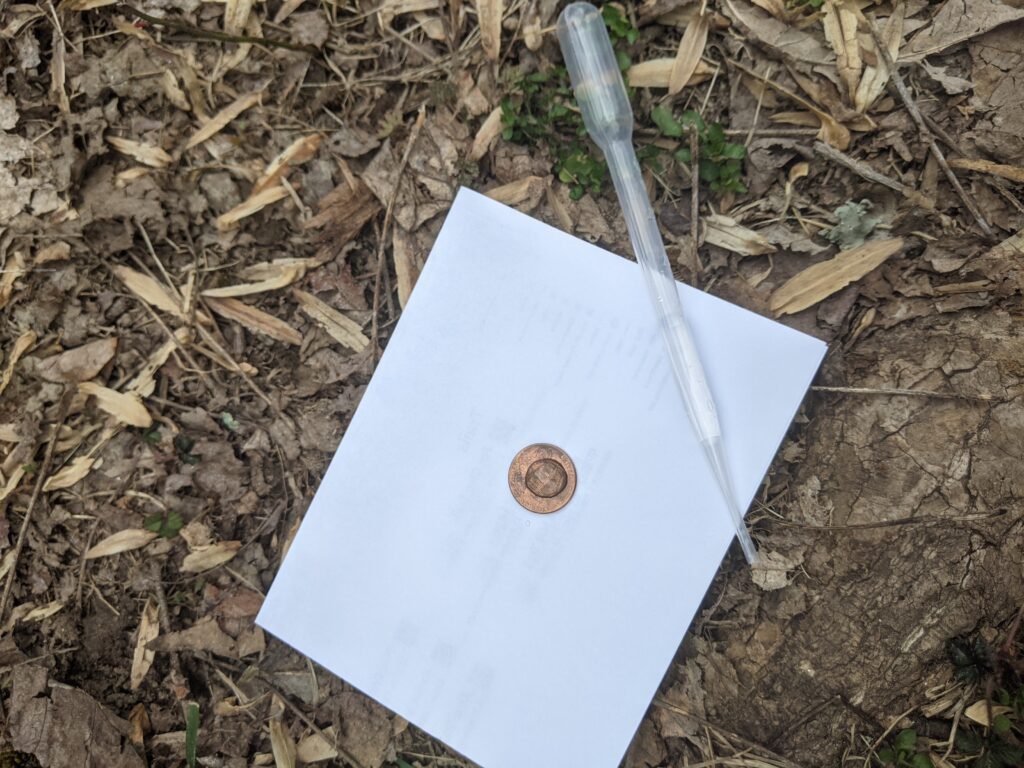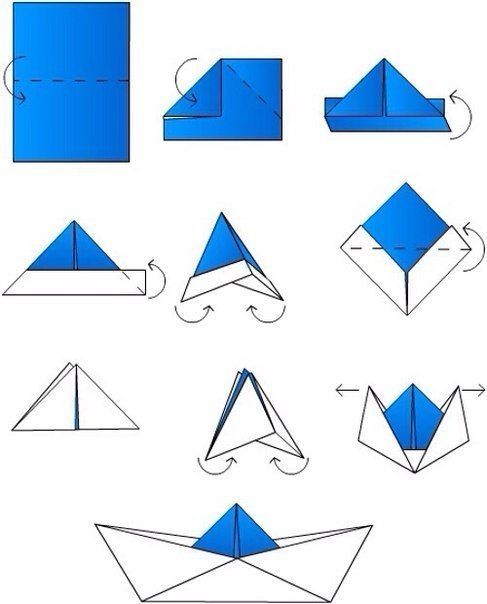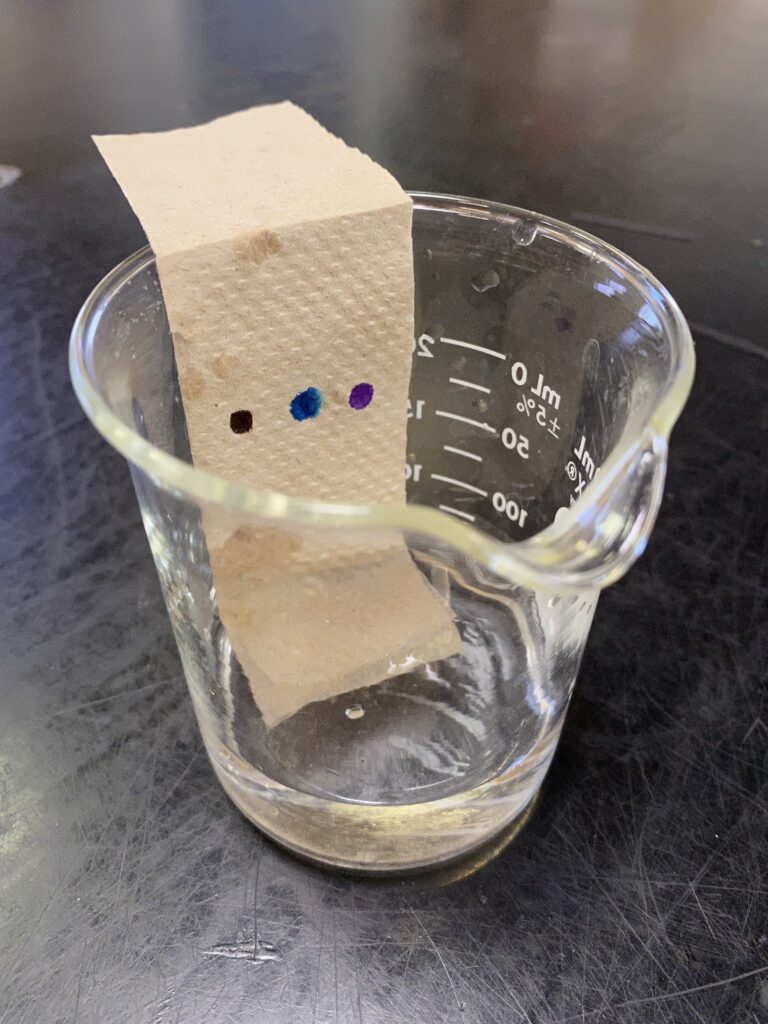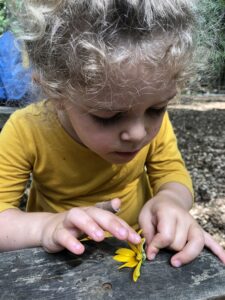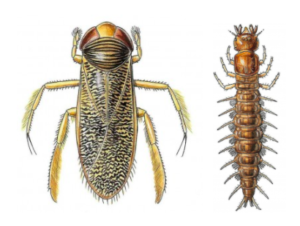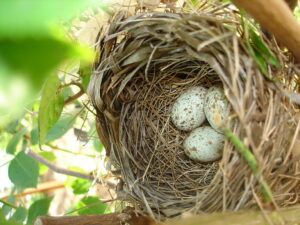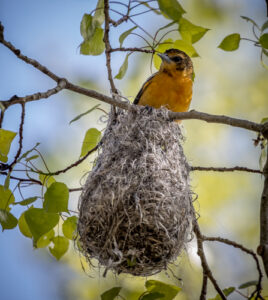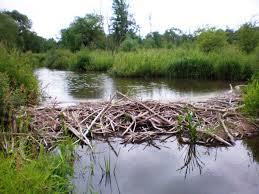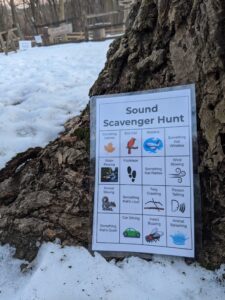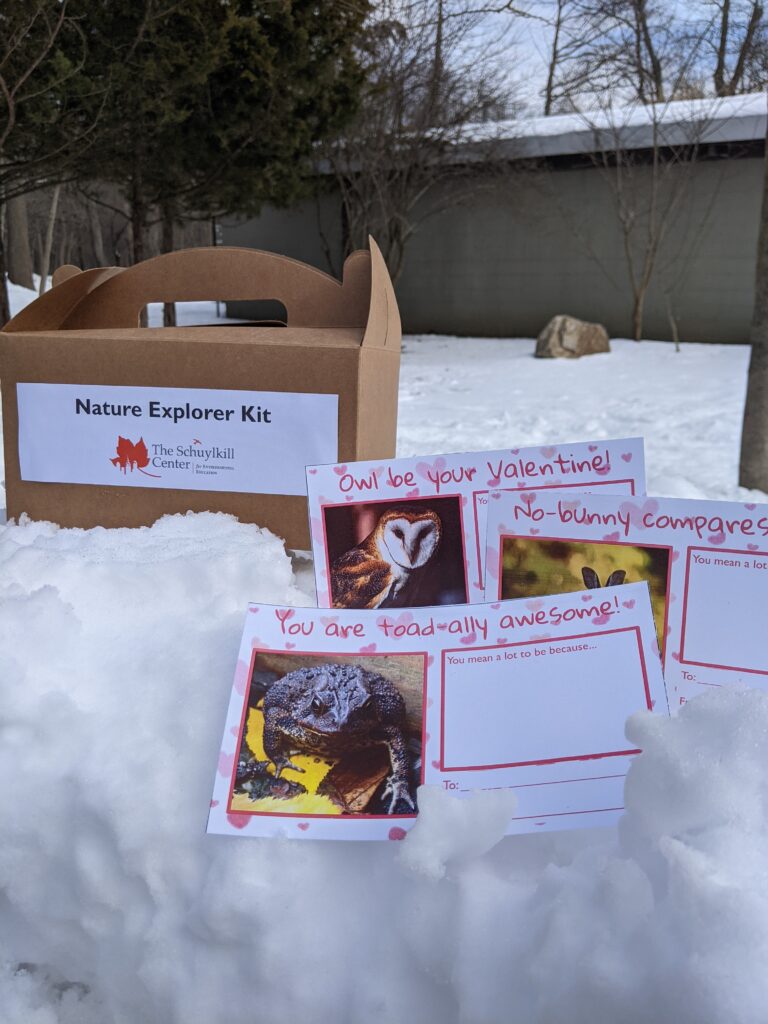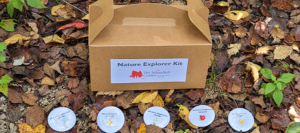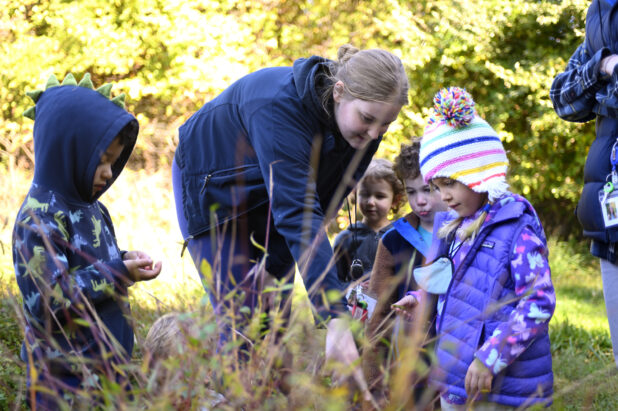
Tag Archives: children need nature

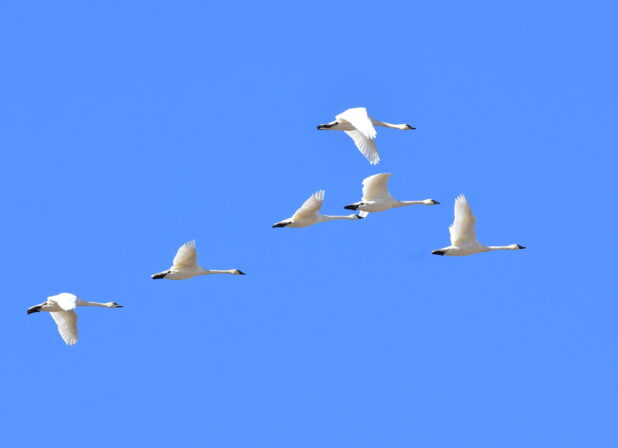
Migration Nature Kit: At-Home Version
This week’s nature kits focus on migration. Twice a year creatures such as certain birds and butterflies make thousand-mile journeys between North and South America. After today’s activity you will understand some of the unique challenges and needs of migrating animals, and you will learn how you can help them safely make their journeys.
Every Saturday, Nature Kits are given out on a first-come, first-served basis from 10:00 am–12:00 pm. Nature Kits focus on a different theme each week and are meant to be done along our trails and given back once completed. If you can’t make it out to the Center to pick up a kit, make sure to check our blog each week for ways to get in some nature exploration at home.
Activity #1: Migration Hopscotch:
- Draw a hopscotch board with 10 numbered squares on the pavement with chalk.
- Then gather 8-10 items that will be placed on the squares later.
- The items can be anything that you find—sticks, pinecones, toys, rocks, utensils, etc.
- After drawing your board, stand in front of the #1 square; you are a bird starting your migration from north to south.
- Each square represents a stopover-site between North America (Canada) and South America.
- Migrate southward on the course by hopping from square to square until you arrive past square #10.
- Before you turn to head back north, have your grownup place 2 items on 2 different squares—these are sites that no longer have resources for you to use.
- Hop back north without stepping on the squares that have these props.
- Continue placing more props on empty squares before every new round until it is impossible to migrate due to lack of squares (resources).
- When the game is done, think about the importance of resources such as food, water, and land to a bird’s successful migration.
- What happens if those resources are taken away? How can we save resources for migrating birds?
Activity #2: Nesting Tree Memory Game
Did you know that some birds, such as swallows, return to one tree year after year to nest? Scientists are still unsure how they are able to find the same tree after migrating thousands of miles away from their warm overwinter spots in the south. Do you think you would be able to remember your nesting tree?
-
- In your yard or a park, choose one tree that will be your final destination nesting tree.
- Then create a trail to get to your final tree, finding 4 trees along the way to “rest” at before arriving at your destination.
- Touch each tree before moving onto the next one, as your grownup records the order of the trees that you stopped at.
- After you arrive at your nesting tree, leave the area for at least 10 minutes, then return and try to perfectly repeat the order of the trees you touched on your trail to your nesting tree.
- Were you able to remember your route precisely?
Activity #3: Migration Resources Scavenger Hunt
Nearly all migrating creatures need to make stops along the way to their destination to replenish on water, food, and rest.
- Choose a migrating bird you would like to become.
- Think about what resources this bird would need during its journey – what food do you eat, and where would you find it?
- Where do you like to rest – in water, in a tree, in a meadow?
- What about drinking water?
- Plan out places in your yard or a park that you would need to visit to survive your flight.
- In the table below, record the resources you find by checking off boxes with a pencil.
Migration Resources Scavenger Hunt
| Resource
(up to 3 sites) |
Check box when you find this resource | Check box when you find this resource | Check box when you find this resource |
| Food (must find at least 1)
What does your bird eat? Examples: insects, worms, berries, plants |
|||
| Drinking Water (must find at least 2) | |||
| Shelter or a place to rest (must find at least 1) |
—Rebecca Deegan, Environmental Educator

Water Nature Kit: At-Home Version
World Water Day is on Monday March 22. According to the United Nations, World Water Day “celebrates water and raises awareness of the global water crisis,” and this year’s theme is valuing water. Let’s celebrate our favorite liquid with these fun activities! (To learn more about World Water Day, and join in on the virtual celebration, visit https://www.unwater.org/worldwaterday2021/.)
Every Saturday, Nature Kits are given out on a first-come, first-served basis from 10:00 am-12:00 pm. Nature Kits focus on a different theme each week and are meant to be done along our trails and given back once completed. If you can’t make it out to the Center to pick up a kit, make sure to check our blog each week for ways to get in some nature exploration at home.
Activity #1: Drops on a Penny
There are many properties of water that make it unique. One of these is its high surface tension. Surface tension describes the strong “layer” at the top of water. It’s what makes it possible for the water strider to “walk” across the surface of water. But don’t take my word for it. Test it yourself!
Materials: penny, eyedropper, water
- Place a penny on a flat surface. (Choose wisely—the surface will get a little wet!)
- Use an eyedropper to slowly drip drops of water onto the penny.
- See how many drops you can add before the surface tension breaks.
Activity #2: What floats your boat?
Buoyancy is the force that allows things to float on water. A paper boat, for example, floats on water because the force of the boat pushing down towards the water is less than the force of buoyancy pushing up from the water. Test it out by making your own origami boat using the graphic instructions below.
Materials: 8.5×11 paper, bowl or sink full of water, coins/stones optional
- See if your boat can float in a tub of water or a sink.
- Place small stones or coins into your boat to see how much weight it can hold until it is no longer buoyant and sinks.
Activity #3: Water on the Move!
Water is the liquid form of H2O. As a liquid, it has some unique properties that allow it to move about. One way water moves is through capillary action. Simply put, capillary action is the ability of a liquid to move without—or even against—gravity through a small space. Water will wick, or draw itself upwards, because it likes to stick to itself and often also to the surface around it. See for yourself!
Materials: cup, 10×2 inch strip paper towel, washable markers, water.
- Get a cup and fill it with about 1 inch of water.
- Cut a 10×2 inch strip of paper towel.
- Use washable markers of varying colors to draw a line of circles across the 2 inch width about 5 inches up the strip.
- Fill in the circle.
- Drape the paper towel over the edge of the cup so that the bottom is just touching the water.
- Fold the top over the edge to keep it from falling in.
- Now wait and watch!
- Can you see the water moving up the paper towel?
- What happens when the water reaches the dots of marker ink?
—Patti Dunne, Environmental Educator
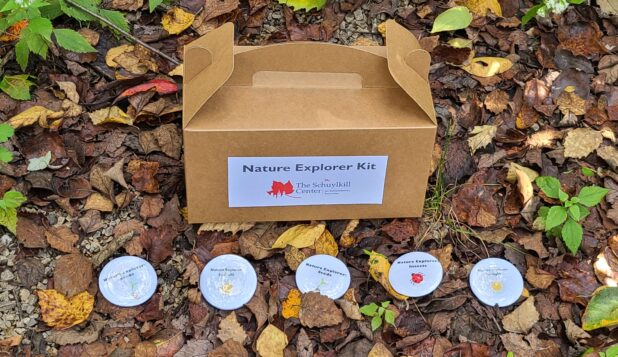
Schuylkill Saturday: Self-Guided Nature Exploration for Families
From the colorful autumn leaves to the fresh snow of winter to the budding flowers of spring and summer, discover the beauty and wonder along our trails in every season through this FREE weekly self-guided program. Pick up a nature exploration kit at our Visitor Center and then hit the trails with your family to complete the activities inside. Explorer kits can be picked up anytime between 10:00-12:00 on a first-come, first-served basis. Explorer kits have activities in them that are meant to be done along our trails and then returned when finished. All ages welcome. No registration required. Masks are required when picking up your kit and when at nature kit spots along the trails.
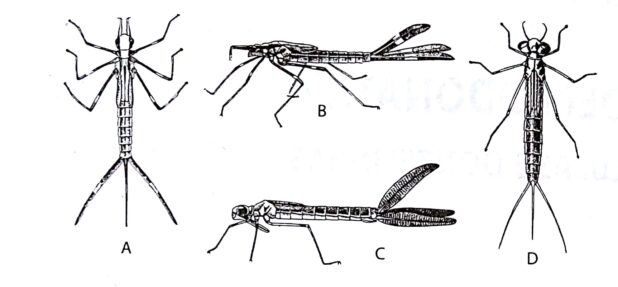
At-Home Nature Explorer Kit: Aquatic Macroinvertebrates
We’re talking about water bugs for this week’s Aquatic Macroinvertebrates themed nature kit. Aquatic macroinvertebrates—“macros” for short—are tiny water creatures that do not have a backbone and are large enough to see with the naked eye. Some are aquatic worms, crustrasians, or animals with a shell, like snails. Many others are the young stage of insects you are probably familiar with, like the dragonfly. From freshwater to saltwater and streams to ponds, each water habitat is called home by a unique variety of macros. These critters might be small, but they play an important part maintaining the health of the exosystem.
Activity #1: Macro ID
When you find a macro in the wild, you will probably want to identify it. The tool we use to identify macros is called a dichotomous key. This key works by asking you a second question that will slowly help narrow down the possibilities until you are able to identify the specific macro you have found. Give it a try!
- Use the dichotomous key linked here to identify the macros below.
- Scroll to the bottom of the post to see if you identified them correctly.
Activity #2: Make Your Own Dichotomous Key
Materials Needed: 10 items in a similar category (details below); pencil; paper
Scientific Skills:
- Observation
- Identification
- Categorization
Instructions:
- Start by deciding what you want to categorize. You’ll need to be pretty familiar with your items since the end goal is to be able to identify them. Consider using familiar plants or insects you can find in your yard, or even sort something in your home, like kitchen tools or your stuffed animal collection. Get creative!
- Set out your items. I would suggest about 10 items. (If you’re using natural items, you don’t need to collect/pick them, but it does make the activity easier to be able to see them all at once.)
- Take a few minutes to make some observations about the items. Ask:
- What makes them similar?
- What makes them different?
- Do I notice any similarities among several of my items?
- Does any one item really stand out from the rest?
- Now you’re ready to start making your key. Begin by deciding what 2 main groups you could break your items into. Every item needs to fit into one of these two groups, so they should be pretty broad. To use stuffed animals as an example, maybe you could split them up into big & little or real & imaginary.
- Now pick one of those groups to focus on. In this group, are there 2 or 3 smaller groups you could break your items into?
- Keep going. Continue this process of breaking the items into smaller and smaller groups until each item is named specifically. (If you feel stuck, you can peak at the example below.)
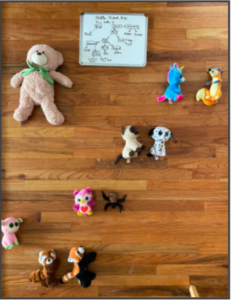
- Ask a family member to test it out! Give them a single item and ask them to follow your key to see if they can identify the item you gave them.
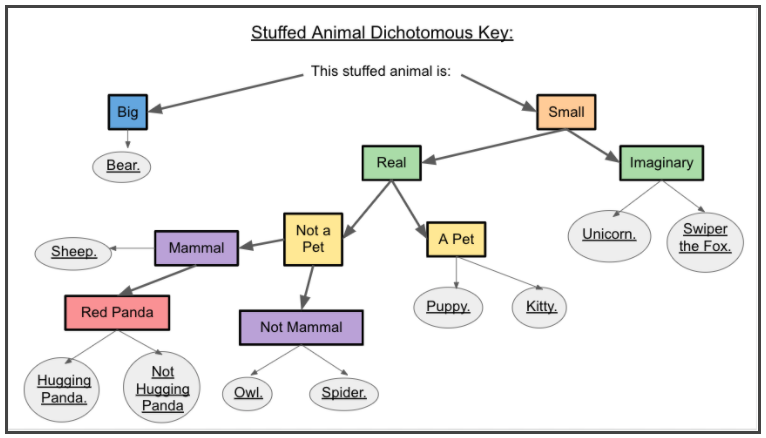
- Share it with us! Take a picture of your key and sorted items and tag us @schuylkillcenter on Facebook or Instagram. We can’t wait to see what you come up with!
Activity 1 Answer:
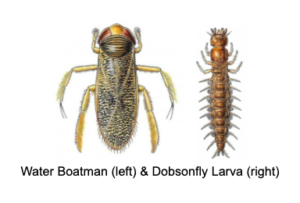 Water Boatman (left) & Dobsonfly Larva (right)
Water Boatman (left) & Dobsonfly Larva (right)
—Patti Dunne, Environmental Educator
Sticks Nature Kit: At-Home Version
This week’s Nature Kits focus on sticks. Even though we often overlook them, sticks are important parts of habitats. Sticks can be used for habitats or homes and can also be hosts for small organisms like moss and lichen.
Every Saturday, nature kits are given out on a first-come, first-served basis from 10:00 am-12:00 pm. Nature kits focus on a different theme each week and are meant to be done along our trails and given back once completed. If you can’t make it out to the Center to pick up a kit, make sure to check our blog each week for ways to get in some nature exploration at home.
Activity #1: Stick Scavenger Hunt
Sticks are different from branches. A branch is connected to a tree. Large branches are called boughs and small branches are called twigs. Sticks are branches that are no longer connected to a tree and are on the ground.
- Go on a walk in your backyard or at a nearby park.
- Use the stick scavenger hunt to find sticks in different shapes and sizes.
- Since sticks can be used for homes or habitats, it is best to leave them where we found them. You can, however, use a camera to take a picture of the different types of sticks that you find.
- Check the items you find off on your scavenger hunt sheet as you go along.
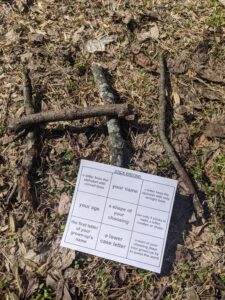 Activity #2: Stick Writing
Activity #2: Stick Writing
- Collect sticks large and small and use them to make different shapes, letters, and numbers. Some ideas for what to make include:
- A letter from the alphabet with curved lines
- A letter from the alphabet with straight lines
- The first letter or your name or, if you have enough sticks, your entire name
- The number that corresponds with your age
- A shape with straight lines
- Using only four sticks to make a letter, number, or shape
- What was the easiest shape, letter, or number to make with sticks?
- What was the hardest?
- Remember to put the sticks back where you found them once you are finished.
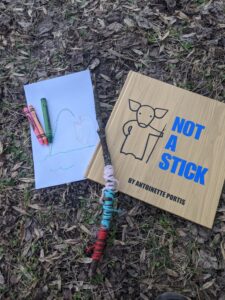 Activity #3: Not Just a Stick
Activity #3: Not Just a Stick
- In her book Not a Stick, Antoinette Portis talks about all the things that sticks can be if you just use your imagination.
- A stick can be a fishing pole catching a shark, a paintbrush for painting a masterpiece, or even a wand for casting spells.
- Listen to the reading of the book here.
- Find a stick outside to use as inspiration.
- Then grab a piece of paper and some crayons and use your imagination to draw some other unique things that sticks can be. Have your grown-up try to think of some ideas as well.
Activity #4: Habitat Building
Animals such as birds, beavers, and squirrels will use sticks to build their homes or nests. Squirrels and certain types of birds will start building their nests by weaving grass and twigs together. They will then line their nests with soft materials such as leaves or moss. Use the guidance below to try to make a bird nest and a beaver dam using sticks.
Bird Nest
Birds will use their beaks to carry small sticks and twigs to their nesting locations. They will weave the sticks together with other soft materials such as grass, moss, and leaves to make a cup shape.
- Use your pointer finger and thumb as a beak and move natural materials to your nest site similar to how a bird would.
- Once you have all of your materials, try weaving them together to make a nest, using the picture below as a guide.
- Nests are easy to see in the winter when the trees are bare.
- Do you see any nests in the trees?
- Squirrel nests or dreys are particularly easy to find, and they typically look like large bundles of leaves.
- Do you see any squirrel nests in the trees?
Beaver Homes
Beavers build dams in order to create small ponds in which they then build their homes. They make these dams by using large sticks.
- Find a medium to large sized rubber maid and use sticks to make a dam in the middle.
- Once your dam is constructed, slowly pour water onto one side of the rubber maid.
- Did most of the water stay on the side where you poured it?
- If so, you’ve created a successful dam!
- If not, empty out the water and try to reconstruct your dam before trying again.
- Did most of the water stay on the side where you poured it?
- If you don’t have a rubber maid at home, you can also try this experiment by digging a small gully outside.
- Make sure to fill the gully back in once finished.
Nature’s Music At-Home Activities
This week’s nature kits focus on the different sounds that we hear outside. From the calling of birds to the whistling of wind to the crunching of leaves—nature is alive with its own special type of music.
Every Saturday, nature kits have been given out on a first-come, first-served basis from 10:00 am–12:00 pm. Nature kits focus on a different theme each week and are meant to be done along our trails. If you can’t make it out to the Center to pick up a kit, make sure to check our blog each week for ways to get in some nature exploration at home.
Activity #1: Sound Scavenger Hunt
In our own neighborhoods, there are sounds specific to nature and sounds not specific to nature.
- Print out a sound scavenger hunt and go on a hike to see if you can hear the sounds on the sheet.
- As you hike around, pause at a few points and cup your hands around the back of your ear to look like the ears of a deer. This helps to amplify sound or make it louder.
- Animals like deer and rabbits have large cup-shaped ears so that they can listen for predators such as foxes and coyotes.
- Which sounds on your scavenger hunt sheet are sounds from nature? Which are sounds that are not from nature? Are there any sounds that you hear that aren’t on the scavenger hunt sheet?
Activity #2: Animal Charades
- Take a piece of paper and cut it into strips.
- Brainstorm some animals that make distinct sounds and write (or draw for younger children) one animal on each piece of paper.
- Put all of the slips of paper in a brown paper bag.
- Go outside and find the perfect stage to perform your charades.
- Have one person from your family pick a piece of paper from the brown bag and make the sound that that animal makes.
- Can everyone else guess what animal it is?
- Have another person take a turn.
- For an extra challenge, split your family into teams and see who can get through the most animals in a set amount of time.
- Which animal sounds were really easy to guess? Which were really hard?
Activity #3: Family Nature Band
- It’s time to create your very own rock band!
- Have each member of your family find a nature instrument.
- Some examples include: using a rock and stick for a drum set, making an xylophone out of different sized sticks, or just grabbing some leaves to crunch.
- Have one person from your family act as a conductor.
- When the conductor moves their hands quickly, the music should go faster.
- When the conductor moves their hands slowly, the music should slow down.
- The conductor can also tell certain people when to stop or start playing.
- Point to someone to tell them to start playing.
- Act as though your hand is a mouth and clamp your fingers together to tell someone to stop playing.
- Can you put together your own family song?
Activity #4: Jingle Sticks
- Find a Y-shaped stick in your backyard or a nearby park.
- Tie a piece of yarn onto one side of the stick.
- String materials that would make sound through the yarn.
- Some examples include: dried pasta, beads, or buttons.
- Once your materials are added, tie the yarn off on the other side of the stick.
- You can wrap the bottom of your stick in yarn or color it with paint.
If you do any of these activities, be sure to snap a picture and share it with us on social media (tag us @schuylkillcenter)—we’d love to see what you discover in your own backyard!
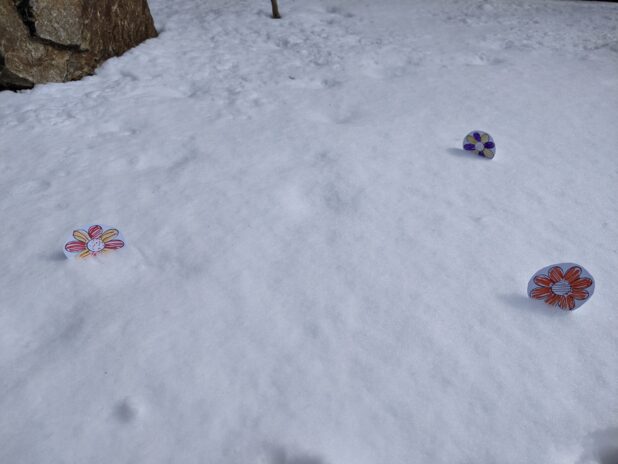
Valentine’s Day Nature Kit: At-Home Version
Happy Valentine’s Day weekend! This week’s nature kits focus on the unique ways that animals find mates. Whether it’s by impressing their partner with elaborate courtship dances, showing off their brightly colored feathers, or by serenading them with beautiful calls, “love” in the animal kingdom stretches the gamut from cute to quirky to downright bizarre.
Every Saturday, nature kits have been given out on a first-come, first-served basis from 10:00 am-12:00 pm. Nature kits focus on a different theme each week and are meant to be done along our trails. If you can’t make it out to the Center to pick up a kit, make sure to check our blog each week for ways to get in some nature exploration at home.
Bright Colors to Attract a Mate
Most flowering plants require the help of pollinators, such as butterflies, birds, birds, and even moths, to make new flowers. When pollinators pollinate a flower, they move pollen in the middle of the flower from one flower to another. When pollen moves from flower to flower, eventually a seed is created, and a new flower can grow from that seed. Since pollinators help to create new flowers, plants want to attract them. One way that they can do this is by being bright and showy.
- Draw three flowers on a piece of white paper.
- Use crayons or markers to color the outside flower petals bright colors, making sure that each flower looks different.
- Go to your backyard or a nearby park and place the flowers in three spots.
- Your grown-up will pretend to be a bee.
- While you are placing the flowers, have them close their eyes.
- Make sure to not hide the flower completely.
- Your grown-up should still be able to see at least part of the flower from where they are standing.
- Have your grown-up turn around and try to locate the flowers by their bright colors.
- Did the bright colors help them to locate the flower?
- Which flower were they able to see first?
- Was this the most colorful one?
- Have your grown-up then move the flowers as you pretend to be the bee.
- Activity Extension: Color the center of each of your flowers with a different color of chalk. Grab a cotton ball and pretend to be a bee by traveling from flower to flower. At each flower that you visit, rub your cotton ball bee in the “pollen,” or chalk, in the center. After you’ve visited each flower, look at the colors on your cotton ball. Is each flower’s pollen color represented on the cotton ball bee? If so, this means you’ve done a good job pollinating!
- Your grown-up will pretend to be a bee.
Dancing to Attract a Mate
The males or boys of some species will actually dance to attract a mate. These dances can often be really funny looking.
- Use this courtship dance sheet to make your own funny dance.
- Start by listing five movements that will be part of your dance.
- Movements can be things like stomping your feet, patting your head, or snapping your fingers.
- The number column is the number of times you would do that movement before moving onto the next one.
- Fill out the sheet and then perform the dance as a family.
- As an added activity, have each person in your family create their own dance.
- Vote on who you think had the best dance.
Using Sounds to Attract a Mate:
Animals such as frogs, crickets, and owls will use mating calls to attract mates. They will call out loudly and their potential mate will decide whether or not to answer back based on if they like what they hear from the call. For this game, you’ll want to start out by finding a large field or backyard to play in. Have your grown-up close their eyes.
- Choose one spot on the field to stand.
- Have your grown-up clap their hands.
- Whenever they clap their hands, clap yours back, making sure to stay in one spot as you do so.
- Have your grown-up use their sense of hearing to find you.
- Once they’ve found you, switch roles and try to use your hearing to find your grown-up.
- Instead of clapping, try to make a different sound.
- You can stomp your feet, snap your fingers, or make your very own noise maker (dried pasta or rice in a jar works well).
- What noises make it easy to find one another?
- Which noises make it a little harder?
- You can stomp your feet, snap your fingers, or make your very own noise maker (dried pasta or rice in a jar works well).
Animal Valentine’s Day Cards:
Animals will care for one another by providing food to their young, helping their mate to build a den/nest, or even by warning one another of danger. There are ways that we can care for one another, and one way to do that is by telling the people in our lives why they are important to us. Valentine’s Day is a great time to do that!
- Print out the animal Valentine’s Day cards that you like best.
- Decide who you want to give your Valentine’s Day card or cards to and write, or have your grown-up write, their name in the bottom box.
- In the message box, write or draw a picture that tells why that person is important to you.
- Try to think about the things they do for you or the things that you like to do with them.
- Give or send your Valentine’s Day card to that person.

At-Home Nature Exploration: Animals in Winter
COVID-19 has forced the Schuylkill Center to pivot and reimagine many of our programs. At the beginning of September, we began to reinvent our popular Schuylkill Saturday program so that families could explore our trails through self-guided activities available in Nature Kits. Every Saturday, Nature Kits have been given out on a first-come, first-served basis from 10:00 am–12:00 pm. Nature kits focus on a different theme each week and are meant to be done along our trails. Since the start of our nature kit program, we have seen more than 800 people come out and have handed out over 450 kits.
Starting this week, we are going to be featuring at-home versions of our popular Nature Kit activities so if you can’t make it out to the Center to pick up a kit, make sure to check our blog each week for ways to still get in some weekly nature exploration right where you are.
Animals in Winter
In the winter, temperatures drop and it gets really cold. In order to survive, animals will do one of three things: hibernate, adapt, or migrate. Animals such as bears and chipmunks will hibernate. This means that they curl up in a warm place, such as a cave or tunnel, and stay there until winter ends. Other animals, such as fox and deer, will adapt. To adapt means to use a special feature, such as a thick fur coat or stored food, in order to survive the cold temperatures. Lastly, to migrate means to travel to a warmer spot. Animals such as birds and even some marine mammals will migrate. Follow the directions for the activities below to learn more about hibernation, adaptation, and migration.
ACTIVITY #1: Squirrels and Adaptation
Squirrels are examples of animals that adapt in the winter. To stay warm in the winter, they will spend more time in their nests and less time out foraging—similar to us staying inside when it gets cold. Before winter starts, they will also bury food such as acorns. It can be hard to find food in the winter so squirrels will return to these stashes of food for something to eat throughout the winter.
- Draw a number of acorns on a piece of paper (Tip: Put a paperclip on them if it’s a windy day!)
- Hide them in either your backyard or a nearby park.
- Wait 5-10 minutes—and then see if you can find them all again.
- If you have real acorns around, you could do this same activity with real acorns—just make sure to mark them in some way (ex. wrapping a piece of yarn around them) so that you can tell them apart from other acorns.
- Take a moment to look around your backyard or a nearby park to see if you see any squirrels out and about.
- Are they digging up acorns that they buried before the winter?
- Try looking up in the trees for squirrel nests. Squirrel nests look like large bundles of leaves balanced between tree branches. They are often easier to see in the winter when there are no leaves on the trees.
ACTIVITY #2: Birds and Migration
Birds are an example of an animal that migrates. Birds migrate to warmer areas to find food and lay their eggs. Birds, however, often face challenges as they migrate. They rely on areas such as wetlands for food, rest, and shelter—similar to how we stop at rest stops and hotels when we travel. These areas though are oftentimes developed to make way for houses or shopping centers. Grab a piece of chalk and make a hopscotch board on a nearby sidewalk.
- Follow the bird migration hopscotch directions to play the bird migration game. If you don’t have chalk at home, try using a rock to draw a hopscotch board instead.
- Take a moment to look around for birds in your backyard or a nearby park.
- Although many birds migrate, some do stick around in the winter and will often change their diet depending on what foods are around.
- For example, birds that eat insects in the spring and summer may switch to eating more seeds, nuts, and berries in the winter when insects aren’t as readily available.
- What type of food do you see that is still around for these birds?
- Although many birds migrate, some do stick around in the winter and will often change their diet depending on what foods are around.
ACTIVITY #3: Bears and Hibernation
Bears, chipmunks, skunks, groundhogs, and snakes are all examples of animals that either enter true hibernation or something similar to it. Animals that hibernate usually find warm areas such as tunnels, burrows, or caves.
- Make a warm den outside for a stuffed animal that you have at home.
- Try to find a small crevice and use natural materials such as sticks and leaves to make it nice and warm.
- Besides warmth, try to think of some other features that would make for a good den (ex. shelter from rain or snow, hidden from potential predators, etc.).
- Take a moment to look around in your backyard or a nearby park. Can you locate some areas that would make for good places for animals to seek shelter or cover?
If you do any of these activities, be sure to snap a picture and share it with us on social media (tag us @schuylkillcenter)—we’d love to see what you discover in your own backyard!
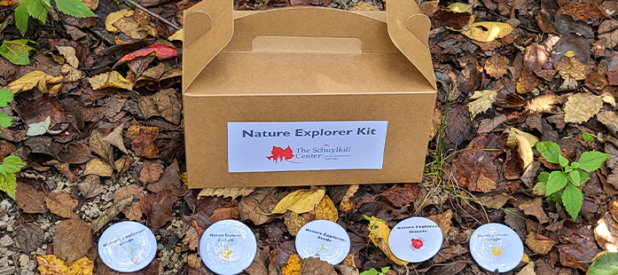
Schuylkill Saturdays: Nature Art or Tracks kits
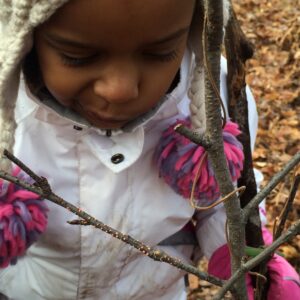 From the colorful autumn leaves to the fresh snow of winter to the budding flowers of spring and summer, discover the beauty and wonder along our trails in every season through this FREE weekly self-guided program. Pick up a nature exploration kit at our Visitor Center and then hit the trails with your family to complete the activities inside. For the months of January and February, past explorer kit themes will be repeated (with the exception of a new Valentine’s Day themed kit on February 13). Two different themed kits will be available each week. Explorer kits can be picked up anytime between 10:00 am–12:00 pm on a first-come, first-served basis. All ages welcome. No registration required. Masks are required when picking up your kit.
From the colorful autumn leaves to the fresh snow of winter to the budding flowers of spring and summer, discover the beauty and wonder along our trails in every season through this FREE weekly self-guided program. Pick up a nature exploration kit at our Visitor Center and then hit the trails with your family to complete the activities inside. For the months of January and February, past explorer kit themes will be repeated (with the exception of a new Valentine’s Day themed kit on February 13). Two different themed kits will be available each week. Explorer kits can be picked up anytime between 10:00 am–12:00 pm on a first-come, first-served basis. All ages welcome. No registration required. Masks are required when picking up your kit.

